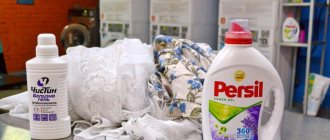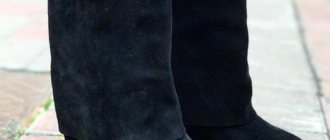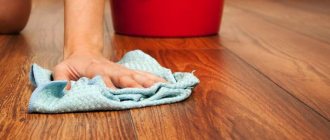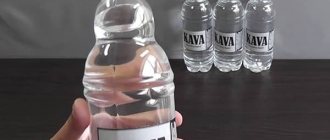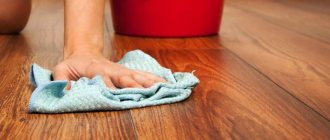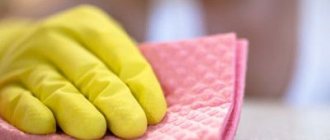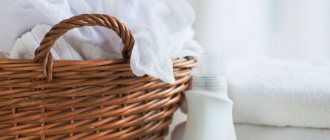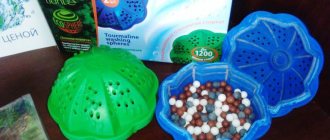Viscose or wood silk - a fabric made from recycled natural cellulose - is today an extremely popular material for the production of various items of men's, women's and children's wardrobe. How can one explain such a demand for viscose in our time, when natural materials are in fashion: wool, cotton, silk? Of course, the properties of viscose itself, in which it is practically not inferior to high-quality cotton (and in some aspects even surpasses it). So, the main advantages of this fabric are its following qualities:
- High hygroscopicity and, accordingly, hygiene.
- Good breathability.
- “Resistance” to static electricity.
- Softness and lightness. Things made of viscose are very pleasant to the touch and do not cause a feeling of discomfort, even if you wear them on a naked body.
- Colorability. Viscose fabrics dye well, and when using high-quality fabric and dye, the colors will look much brighter and “deeper” than on cotton.
- Resistance of dyed fabric to various factors. Viscose (again, high quality) practically does not fade or fade for a long time.
Viscose jumpers are thin, soft and very pleasant to the touch
Tree silk is the first artificially created material to find practical application in the field of clothing. In fact, viscose is difficult to classify as a synthetic substance, since it is obtained from natural wood artificially, and is not synthesized in chemical laboratories.
Things made from 100% viscose look great on the figure, but they are somewhat impractical because they stretch quickly and do not retain heat well. But products made from mixed yarn, for example, cotton and viscose (Jumper A1465), hold their shape well and retain heat.
Despite all the advantages of viscose, it is still a rather delicate and “capricious” material, things from which can be easily damaged by careless handling. Caring for viscose includes three main points: washing, drying and ironing.
How does the material behave when washed?
How to keep the size of your favorite thing? Thanks to the special structure of the fabric, viscose materials remain clean for a long time. Therefore, as a rule, you don’t have to use much effort to clean such things. However, like any matter, it requires individual care.
This fabric is made from natural materials. It is based on recycled cellulose and compressed plant fibers . Therefore, washing and drying on a general basis can easily turn an elegant item into a shapeless bag.
Important: “Items made of viscose require careful care and careful adherence to the manufacturer’s recommendations.”
If too concentrated or the wrong detergent is used, the color of the product may be affected. And careless hand washing will lead to damage to the fabric structure.
Viscose production
The raw materials for cellulose are modal (regular wood), bamboo, siblon (coniferous wood), tencel (equalipt).
The first step in the production of viscose material is cleaning the wood and grinding it into chips. Wood raw materials are heat treated in an alkaline solution and excess water is removed, leaving 6-8% humidity. The resulting composition is passed through filters, resulting in the formation of cellulose fibers. They are dried, pressed and bleached. At chemical plants, such cellulose is used to create viscose threads, which are sent to weaving factories for threading and dyeing.
What affects shrinkage
However, the most pressing issue when purchasing products containing viscose fiber remains the problem of fabric shrinkage. Viscose is more susceptible to deformation than any purely synthetic material. But you can clearly maintain the original size of your clothes by following the rules of washing and drying.
Fabric consisting of 100% viscose is less susceptible to shrinkage. Mixed fabrics greatly increase the chance of deformation. For example, an item that contains a combination of viscose and wool can shrink by half after washing in hot water. Hot water contraindicated for such tissues .
The best option in terms of shrinkage is a combination of viscose and polyester. True, such a composition wears out faster and becomes covered with pellets.
Important: “You can try to return a shrunken item to its original size by ironing the wet item with an iron. If the deformation is not severe, shrunken clothes should be washed correctly and stretched before drying.”
Not all things spoil during washing. Improper drying can also ruin the appearance of the outfit. Viscose does not like strong temperature changes, so clothes with added viscose fiber cannot be dried on radiators. Contact with a hot heater will cause severe shrinkage.
To insure against unpleasant situations, you should carefully study the composition of the material before purchasing. The quantitative ratio of viscose and its combination with fibers of other origins impose different restrictions on washing, drying and ironing clothes.
Automation
To prevent viscose from shrinking after the first wash, you must follow certain rules.
Before performing the procedure, you will need to study the clothing label, since a combination of different fibers is often used, and this may change the conditions for caring for things.
You should not rely on your own opinion. Follow the manufacturer's recommendations.
How to wash viscose in a washing machine correctly:
- Delicate material requires setting the appropriate mode. You can wash the fabric using the following programs: delicate or manual.
- At what temperature? Water temperature - 30 degrees.
- Dresses, sweaters or other items should not be washed in a washing machine. The fabric may shrink.
- This material cannot be dried in a machine. May stretch or shrink, again depending on the composition stated on the label.
- Pour liquid concentrate into the powder compartment.
- You can use fabric softeners.
- You can add bleach to the appropriate tray. It should be chlor-alkali-free. For viscose, it is recommended to use oxygen bleach. For example, Vanish.
Before washing, it is better to place the item in a special bag. This will reduce mechanical stress on the fabric. In addition, you can save on water and electricity by placing things in the machine that need to be washed on a delicate cycle at 30 degrees.
After washing the item, put it in the bath, carefully squeeze out excess moisture and lay it on a horizontal surface to dry.
Basic washing rules
In order for the item to retain its shape for a long time and please the eye with a fresh color, before putting it in the machine, you must carefully study the labels. The information on the labels is placed precisely to help the buyer keep the product in its original form. Also, some general tips won't hurt:
- bright viscose items cannot be washed together with white ones;
- before washing, you can moisten a small area of the material and place it on a white napkin, this will allow you to understand whether the item is shedding or not;
- It is unacceptable to start washing with pieces of dirt stuck to the fabric;
- It is better to fold clothes into the machine by turning them inside out;
- Fastened buttons, snaps or zippers will protect against distortion.
What type of fabric is this?
Viscose is a fabric produced synthetically from natural raw materials. The source is cellulose obtained from wood.
The fabric, made from pure viscose, is similar to silk - just as smooth and shiny, weightless and translucent. It is soft to the touch. Pure viscose has low strength, especially when wet. To make the material stronger or give it other properties, admixtures of other fibers are added.
Silk
Fame and luxury: a detailed review of silk fabric
more details
Currently, viscose is produced mainly in the following countries: Germany, China, Korea, Italy.
Technology for producing viscose fiber:
- The wood is crushed into chips.
- The material is dissolved in alkali.
- The resulting mass is washed and bleached.
- The mixture is treated with carbon disulphide, then dissolved in sodium hydroxide.
- The resulting mass is passed through special filters.
- The resulting threads are spun into yarn and fabric is made on looms.
Consequences of improper washing
Depending on the stage at which the mistake was made, the consequences and the possibility of eliminating them change.
In too hot water, fabrics containing cotton and wool cannot avoid severe shrinkage. In this case, it will no longer be possible to restore the previous dimensions.
After ironing, steaming or improper spinning, clothes may stretch several sizes. It will not be possible to return to its original forms. It is better to iron in the “silk” mode through damp gauze , avoiding water droplets getting on the clothes.
Improper drying will lead to warping of the product. A slight deformation in this case may disappear after proper washing and drying.
Important: “Viscose can only be dried on plastic, wide hangers or laid out horizontally on a towel.”
How to avoid shrinkage
To understand how to properly wash viscose so that it does not shrink, pay attention to the composition of the products. Things that contain admixtures of other fabrics are susceptible to deformation. Viscose is used with wool or polyester to add strength. The properties of materials subject clothing to deformation and it may shrink. Another reason is inadequate quality. If the percentage of viscose to other product materials is low, the mode is selected for the predominant material (cotton, synthetics, etc.). Key reasons for reducing viscose items:
- Sharp fluctuations in water temperature. I wash and rinse clothes in water at the same temperature.
- Application of alkali-based powders.
- Aggressive spin.
If trouble occurs, your favorite dress or blouse shrinks after washing, you can try to revive the damaged item:
- if the product has not yet dried, you need to put it on and wait until it dries completely;
- iron with steam at minimum temperature, stretch gently;
- wet, squeeze with your hands, leave in a horizontal position on a clean towel, try to stretch;
- If the dress or blouse has become shorter, hang the wet items on hangers lined with foam rubber and pull them down.
What is dry cleaning of viscose items?
Dry cleaning is another option for preparing clothes for a gentle wash cycle. It is used primarily for manual operation. In some cases, it successfully replaces soaking. In this case, the viscose item is pre-cleaned with a soft brush. It is necessary to clean carefully without creating abrasions or pilling.
Viscose products are an excellent addition to any wardrobe. Bright things that can highlight the attractiveness of your figure will always be popular. And with proper care, extending the life of your favorite item will not be difficult. The main thing is to pay attention to the instructions and take good care of your clothes.
What is cold viscose
Viscose: stretches or not
Origin story
For the first time, the idea of possibly processing cellulose belonged to the Englishman Mercer, so the idea of creating artificial fabrics originated a long time ago. There were even attempts to create them. But everything did not end as successfully as desired, for example, in England, experiments were carried out to obtain synthetic threads for 200 years, but the results turned out to be unviable.
Production technologies improved, and at the end of the 19th century, viscose thread was created in England. Then its mass production and distribution throughout the world began.
When and how did viscose fiber appear?
The first attempts by English scientists to learn how to create artificial fibers similar to natural silk can be dated back to the 17th-18th centuries. This process was long and not always successful. English chemists were truly lucky at the end of the 19th century when they managed to improve the process of making fiber from recycled wood pulp and obtain a new fabric.
They came up with a name for it - viscose (viscosus in Latin means sticky, viscous). Apparently, because the raw material for its production was a viscous thick mass obtained from processed wood. The manufacturing technology has been patented. And it is still used in almost the same form today. Since 1892, first England and then other countries began producing viscose.
Types of fabric
There are many types of viscose and they differ in parameters and application:
Cupra
To make it, cotton is added to viscose. The latter imparts hygroscopicity and the ability to pass air. It has a pleasant satiny shine and softness. Various clothes are sewn from it: it will be comfortable in summer and not cold in winter.
Acetate
Made from cellulose waste, it is very thin and resistant to deformation. This material does not absorb water. Used as a lining.
Modal
In production, 100% viscose fiber is used, but more modernized. This fabric is quite durable, but soft, can withstand many washes and does not shrink. The material has a characteristic shine. Does not cause irritation upon contact with skin.
Siblon
This is an improved viscose. It is made from coniferous wood. Durable, hygroscopic, practically does not wrinkle, shrinks less after washing.
Lyocell
New generation viscose. Reminds me of cotton fabric. Durable and wash-resistant, has a pleasant shine.
How to recognize quality fabric
To be sure of the excellent quality of viscose, you need to evaluate the material not only by its appearance. This is understandable, because viscose can be different: bright and pale, matte and shiny, smooth and rough, thin and dense. A great way to recognize quality fabric is to do a fire test.
A small piece of fabric is enough for the experiment. It needs to be set on fire. Recycled wood will produce a bright flame. You will smell burning paper. When the flame subsides, the threads will char, forming lumps. When touched, the lumps should fall off.
If the fire method is not suitable, you should take a closer look at the fabric. It, unlike synthetics, should be soft. The material is not electrified. This can be easily checked using a glass or plastic rod. The natural smell is papery. Highly breathable: apply the fabric to the skin and blow on it, you should feel a breeze.
The FITEX GROUP company is engaged in the production and sale of viscose fabrics. The goods meet the necessary requirements. They are in demand among many fashion manufacturers in Russia.
How to remove a stain?
So, we found out whether viscose can shrink when washed and why it cannot be wrung out or dried vertically. Now let's talk about what to do if an unknown stain is found on the fabric.
Rule #6. Viscose material is extremely sensitive to acid stain removers, and therefore, forget about table vinegar, alcohol, and other aggressive agents. Also, the fabric should not be rubbed and bleaches should not be used on colored fabric.
- Apply a mixture of water and salt to the stain; after half an hour, the item can be washed as usual;
- A stain from a white cloth can be removed with hydrogen peroxide;
- You can use children's stain removers.
Rule #7. Clothes made of viscose are ironed only from the wrong side, preferably through gauze, with the iron set to minimum or medium temperature. Depends on the composition - read the recommendations on the label.
Is viscose a natural fabric or not?
To answer this question, you need to remember the classification of textile raw materials - any types of fibers (natural and chemical) that are suitable for processing.
Natural ones are animal wool, silkworm threads, raw materials of plant origin (linen, cotton).
Chemical – what is obtained as a result of processing various types of raw materials with chemicals. In turn, they are divided into synthetic fibers obtained from various organic substances (for example, polyester from polyester fibers), and artificial fibers, which are obtained by processing natural raw materials (rubber, casein fibers from milk, viscose from cellulose).
Based on this, viscose is an artificial fiber obtained from natural raw materials - wood cellulose. From this point of view, the fabric can be considered natural. But at the same time, special chemical solutions are used in production, that is, it is obtained artificially. Therefore, viscose is sometimes called natural synthetics.
Material cost
You can buy viscose at any fabric store or order it online. The price range is wide, for every budget. A meter of 100% viscose costs 500–900 rubles. Fabric with various additives costs from 300 to 1000 rubles per meter.
When choosing viscose items, you need to pay attention to what type of fabric they are made from. Despite the fact that viscose is not very expensive, it is counterfeited. It's easy to check for a fake. When ignited, viscose thread flares up and burns quickly, while synthetic thread takes a long time to melt.
Application in light industry
Viscose fabric is an excellent material for sewing workwear. It is well ventilated, and is often used to make work uniforms: medical gowns, aprons, thermal underwear, jackets, uniforms for air and railway transport workers, etc. The lion's share is occupied by sewing sportswear - both summer and winter: suits, T-shirts, leggings, T-shirts.
A significant niche in the use of viscose is occupied by home textiles - tablecloths, cleaning napkins, towels, curtains, tulle, bedspreads. When sewing outerwear, it is used as a lining. In applied needlework, ribbons and embroidery threads are made from it. Viscose fibers that have undergone special modification are used in medicine and for chemical protection.
Pros and cons of fabric
Pros of viscose material:
- High breathability.
- Increased hygroscopicity.
- Strength.
- Can be painted in any color.
- Does not accumulate static electricity.
- Ease.
- Doesn't shed.
- Does not cause irritation upon contact with skin.
- Doesn't roll down. Soft to the touch.
Flaws:
- Shrinks after washing.
- Burns out in the sun.
- Wrinkles.
- Subject to deformation when wet.
- Requires delicate care.
Advantages and disadvantages of the material
Viscose is a natural synthetic obtained from wood. Positive qualities of the fabric:
- does not cause allergies;
- pleasant to the body;
- allows air to pass through, allowing the skin to breathe;
- elastic, stretches well, except for 100% viscose;
- durable;
- Resistant to stains.
Disadvantages include difficulties in caring for the products. When washed incorrectly, the fabric becomes deformed and the surface becomes covered with pellets. Frequent washing leads to fading and wear of the material.
When wet, the fabric becomes stiff. In this form it is easy to damage. After washing, things shrink a lot. Using the wrong detergent will cause the fabric to fade.
Cutting and sewing from viscose fabric is not easy. The cuts crumble, and the material itself is mobile, shifting when cutting. When working with the material, it is secured with pins. It is sewn on a machine after preliminary stitching by hand.
When cutting out parts, wide allowances should be made, and the cuts should then be processed with an overlocker. You need to sew things a size larger, as the product shrinks a lot after washing.
View this post on Instagram
Publication from the Online Fabric Store (@drapery_market) March 13, 2020 at 1:57 PDT
